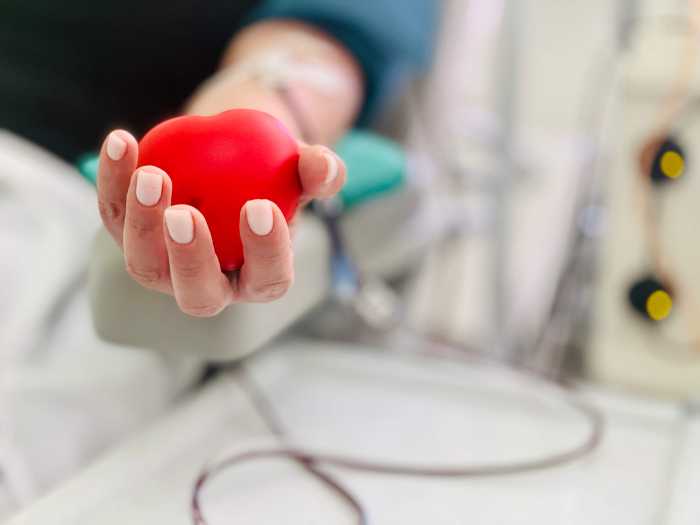Martez Smith.
BY JULIE “JD” DAVIDS | New Yorkers living with HIV who are younger and healthier have the lowest rates of both linkage to care and undetectable viral loads in the first year after diagnosis, according to a presentation at the recent 2015 Conference on Retroviruses and Opportunistic Infections (CROI 2015) in Seattle.
The figures from 2006-2013 show that overall city rates of care and viral suppression rose during that period. By 2013, around 86 percent of New York City residents with HIV knew their status, with 76 percent of them linked to care. Nearly 70 percent of those on treatment had undetectable viral load.
However, Lucia V. Torian, PhD, the city’s head HIV epidemiologist who presented the data, speculated that New York City may not reach the very high levels seen in San Francisco and Australia, locations lauded for achieving the benchmarks set by global AIDS groups to end the epidemic.
New Yorkers under 24 the least likely HIV-positive group to be linked to care, treatment
The goals of Governor Andrew Cuomo’s Plan to End AIDS, which will be carried out by the State AIDS Institute, hinge on raising rates of HIV diagnosis and treatment success and on providing access to pre-exposure prophylaxis (PrEP) for those at high risk of HIV infection who wish to take it.
The study demonstrated that rates of viral suppression rose after the establishment of city, state, and federal policies that broadened guidelines for antiretroviral use and mandated active linkage to care efforts, which Torian described as “don’t just hand someone a business card; make the appointment for them and document that they actually showed up for care.”
But across the years of study, those who were young (18-24 years old), healthy (as measured by CD4 count), or both had significantly lower rates of care and viral suppression. Statistics for linkage to care improved dramatically among the youngest in the study in 2013 compared to previous years, but the percentage of this group with undetectable viral load remained well below the average across all age groups.
Dr. Donna Futterman, the director of the Adolescent AIDS Program at the Children’s Hospital at Montefiore Hospital in the Bronx who has spent decades working with young people with HIV, wasn’t surprised.
“What is a surprise,” she explained, “is that we as a community aren’t doing better at this. When they are diagnosed there’s not a community context, there’s no historical context. The kids feel very isolated, guilty that they ‘made the mistake’ and did this. Still, it’s a big secret and so they’re afraid to tell anyone and you really can’t take these medicines if you can’t disclose, especially to the people you live with. So the kids who are living at home or with partners they have kept this a secret from… If you’re afraid to disclose, you’re not going to take them.”
Futterman noted, “Adult clinics are almost running on routine, very little time for each patient. The teens need a lot more support and time to both process the diagnosis and process the medication.”
She continued, “We really can’t blame the kids, the adults haven’t done their jobs. We need to go back to the drawing board and find out what kids are really thinking today now, not just go on what they used to be thinking.”
Martez Smith, a 23-year old black man sexually active with other men and who is living with HIV, offered his thoughts on Torian’s data. A master’s of social work student at Brooklyn’s Long Island University, Smith argued it takes more than HIV-specific services to meet the needs of young people of low socioeconomic status who are facing an HIV diagnosis.
“For example, I am a member of the New York City house and ball culture,” he said. “A lot of people who are involved in that scene, being of lower socioeconomic status, are not engaged in treatment and care because treatment and care are not a priority for them. If I’m facing a housing emergency and I’m couch surfing, going to the doctor and getting a CD4 and viral load test is not at the top of my priorities.”
Smith recommended making a broad range of services as accessible as possible.
The study — based on the city’s HIV surveillance registry, which holds more than eight million lab reports — looked at all those 18 and older who were newly diagnosed with HIV between 2006 and 2013. Linkage to care was measured solely by reports of CD4 and viral load tests, meaning that a doctor’s visit would go unnoted if labs were not drawn. People were considered virally suppressed if their count was under 400 copies at the six month and 12 month marks.
However, another CROI 2015 presentation cautioned that 12 months of data post-HIV diagnosis may not predict who is in care and virally suppressed over the long term. In a poster presentation, Dr. Jonathan Colasanti of Atlanta’s Emory University School of Medicine and colleagues showed that rates of both care continuity and viral suppression for HIV patients in that city were significantly higher for the 12-month snapshot than for 24 or 36 months. Thus, while the city health department’s data indicates that progress has been made in one-year rates of care and viral suppression, the road to ending the epidemic in New York City may be steeper than short term numbers may imply.
Dr. Demetre Daskalakis, the city health department’s assistant commissioner for the Bureau of HIV Prevention and Control, told Gay City News that the city recognizes the challenges faced by the young and the healthy, saying that this data “poses a challenge to the healthcare delivery system to identify novel and youth-friendly ways to support care… The health department is working hard with our partner clinics to develop plans that improve their efforts at suppressing their populations’ viral load.”
But despite the improvements in the numbers, Torian expressed skepticism — having lived in New York for several decades — that the city would reach the levels of viral suppression to meet the ambitious UNAIDS goals San Francisco and Australia have achieved: 90 percent of people with HIV diagnosed, 90 percent of that group in care, and 90 percent of those in care showing an undetectable viral load.
She said the city can get close, but it would likely take further legal and policy changes, as well as community mobilization and buy-in, to see plummeting HIV incidence in adults.
Daskalakis noted that New York has a significantly larger, older, and more complex epidemic than the locales Torian mentioned, but believes significant gains are nonetheless possible.
“We are working hard to accelerate the bend in NYC’s curve,” Daskalakis said. “This won’t be easy, but it is achievable using the latest technology, community support, and political will. The stars are aligned to make this happen. I am an optimist, but also believe we have all the tools we need to leverage at hand.”
Julie “JD” Davids is managing editor of TheBody.com and TheBodyPRO.com. CROI 2015 presentations, including study abstracts and webcasts, are available at croiconference.org.



































